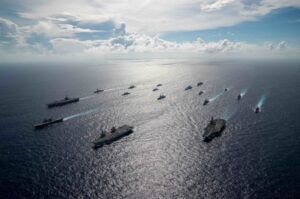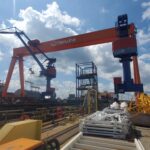
U.S., U.K., and Japanese naval groups operated jointly in the Philippine Sea on Oct. 3, the U.S. Navy said on Friday. The integrated at-sea operations had over 15,000 sailors cooperate across six countries. The Navy said this “demonstrates the U.S. Navy’s ability to work closely with its unmatched network of alliances and partnerships in support of a free and open Indo-Pacific.” Participants included Carrier Strike Group (CSG) 5 with the USS Ronald Reagan (CVN-76), CSG 1 with the USS Carl…

 By
By 








